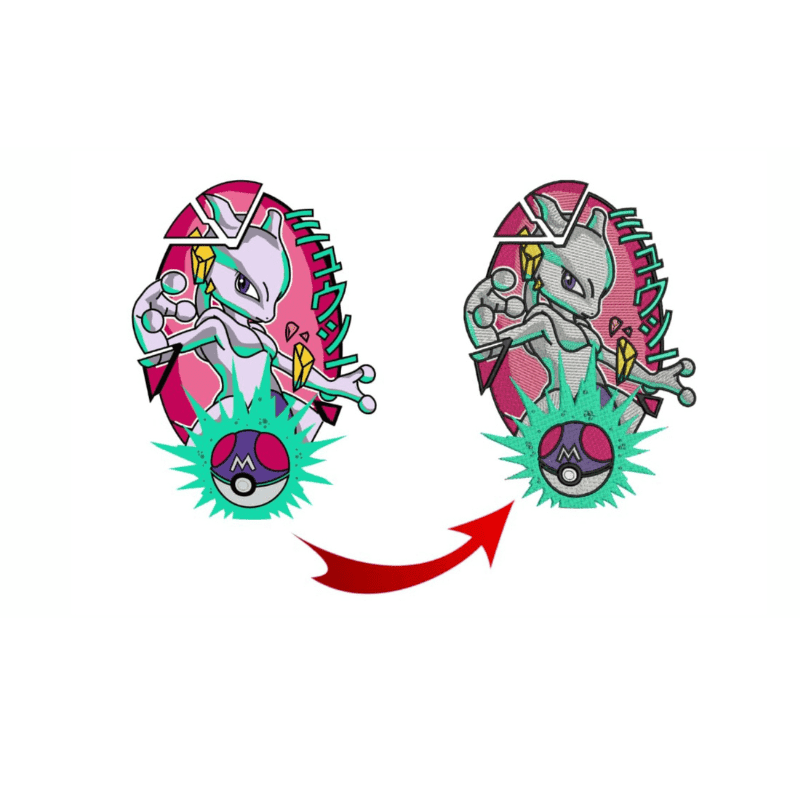Simplifying the Art of Needlework Digitizing: Step-by-Step Guide
Embroidery digitizing is a careful craft that requires precision and imagination. As modern technology remains to advancement, the digitization procedure has ended up being a lot more easily accessible, enabling lovers to bring their elaborate designs to life with ease. In this overview, we will certainly unwind the complexities of embroidery digitizing, damaging down each action systematically to enhance the procedure and equip both novices and seasoned embroiderers alike. Stay tuned to find how you can simplify this intricate art form and change your creative visions into perfectly embroidered work of arts.
Recognizing Needlework Digitizing Software
Needlework digitizing software application functions as a crucial tool for changing detailed styles into electronic styles suitable with embroidery equipments, promoting accurate stitching and personalization. This specific software application enables users to import various image data layouts, such as JPG or PNG, and convert them into embroidery machine-readable formats like DST, EXP, or PES - Digitizing for Embroidery. By making use of attributes like stitch editing and enhancing, underlay choices, and string color option, digitizing software makes it possible for users to control every facet of the style procedure
Moreover, progressed embroidery digitizing software application supplies devices for producing complex layouts, adjusting stitch thickness, and incorporating complex information. Customers can additionally sneak peek the style prior to sewing it out, ensuring accuracy and reducing errors. Additionally, numerous software application supply automated attributes that aid simplify the digitizing procedure, conserving effort and time.
Understanding the capabilities of embroidery digitizing software application is crucial for achieving top quality cause needlework projects. By mastering this device, needlework lovers and experts can unleash their creativity and bring intricate layouts to life with accuracy and effectiveness.

Choosing the Right Style Documents
After acquainting on your own with the capacities of embroidery digitizing software application, the following crucial action in the process is picking the right layout apply for your job. Digitizing for Embroidery. When selecting a style apply for needlework digitizing, it's crucial to take into consideration the intricacy of the layout, the dimension of the end product, and the sort of material you will certainly be collaborating with
For complex styles with great information, a high-resolution photo or vector documents is advised to make sure that the needlework equipment can precisely duplicate the layout. Additionally, the size of the end product plays a significant duty in picking the appropriate layout documents. Bigger designs may need greater resolution documents to keep clarity and sharpness.
Additionally, the sort of material you will be embroidering on affects the option of layout data. Different textiles may call for modifications in the design documents to make sure that the stitches are properly straightened and the design looks like meant. By carefully picking the best layout file based upon these factors, you can set on your own up for a successful embroidery digitizing process.
Digitizing Tools and Methods
Utilizing specialized software program and precision techniques, digitizing tools are essential in transforming elaborate styles right into embroidery-ready documents. Needlework digitizing software, such as Wilcom, Hatch, or Embrilliance, provides the required system to transform art work right into stitch information. These programs use attributes like stitch editing, underlay options, and lettering tools to Website guarantee the style converts seamlessly onto fabric.
One of the crucial methods in digitizing is developing a clear path for the needlework equipment to follow. This entails digitizing each element of the layout with precision, identifying stitch kinds, thickness, and instructions. By utilizing tools like digitizing tablets or software-specific plugins, embroiderers can achieve a high level of accuracy in their digitized styles.
Moreover, grasping the art of rug sewing is crucial for creating quality embroidery. Underlay sewing maintains the textile and develops a foundation for the style, ensuring that the end product is both visually enticing and long-lasting. try here By understanding these digitizing tools and techniques, embroiderers can elevate their craft and bring complex styles to life with accuracy and efficiency.
Personalizing Stitch Kinds and Directions
Having actually developed a structure in digitizing devices and strategies, an essential aspect in progressing embroidery workmanship lies in personalizing stitch kinds and instructions with accuracy and function. The choice of stitch kinds can dramatically influence the total look and texture of the stitched layout. Satin stitches, known for their smooth and glossy finish, work well for producing boundaries and text. On the various other hand, fill stitches are perfect for covering bigger locations efficiently. By tactically incorporating these stitch types, embroiderers can achieve deepness and measurement in their styles.
Furthermore, the direction of stitches plays an essential function in improving the visual charm of the last embroidery. By experimenting with different stitch angles and patterns, embroiderers can bring their styles to life with exceptional information and details.
Screening and Refining Your Digitized Design
To guarantee the precision and quality of your digitized design, thorough testing and improvement are vital action in the needlework digitizing process. When you have completed the digitization of your design, it is important to check it before continuing with the actual needlework. Evaluating enables you to identify any type of potential issues such as thread breaks, stitch read the article density troubles, or layout distortions that might impact the last result.

After screening, it is vital to improve your digitized style based upon the responses from the test sew-out. This might include tweaking stitch setups, changing densities, or making adjustments to the total layout to attain the wanted result. By repeating with screening and refinement, you can tweak your digitized layout to excellence prior to moving on with the real needlework procedure.
Verdict
In conclusion, understanding the art of embroidery digitizing needs a complete understanding of the software program, picking the right design file, using digitizing tools and techniques, customizing stitch kinds and instructions, and testing and fine-tuning the digitized style. By adhering to these actions, embroiderers can streamline the digitizing procedure and create top quality embroidered designs with accuracy and effectiveness.